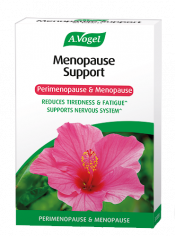What Is Post-Menopausal Bleeding?
Once you’ve gone 12 months without a period, you’re officially considered post-menopausal. Any bleeding that happens after this point is known as post-menopausal bleeding.
This bleeding can appear in different ways:
- Light spotting
- A pink or brown discharge
- A flow similar to a normal period
- Or even heavier bleeding with clots
When Should You See Your Doctor?
Simply put: any time you notice bleeding after menopause.
It doesn’t matter whether it’s just a bit of spotting for 24 hours or something heavier. It’s especially important to get checked if:
- The bleeding happens more than once
- It’s heavy or continuous
- There’s an unusual discharge or smell
- You’re experiencing pain at the same time
Common Causes of Post-Menopausal Bleeding
There are several possible reasons for bleeding after menopause — and most of them are harmless. From my experience, many women notice some bleeding between the first and second year after their periods stop completely. That’s why I usually suggest waiting until around two years after your last period before considering yourself fully post-menopausal.
Here are some of the most common causes:
1. Hormone Fluctuations
Even after a year or more without periods, your hormones can still fluctuate slightly. These tiny changes can sometimes be enough to trigger a light period or a bit of spotting.
2. Vaginal Dryness
After menopause, the vaginal walls become thinner, drier, and less flexible. This can lead to small tears, which cause light bleeding — often after intercourse or exercise. This is quite common, particularly if you’ve recently started a new fitness routine.
3. Hormone Replacement Therapy (HRT)
Starting HRT increases your hormone levels, which can trigger some bleeding. Before you begin HRT, ask your doctor whether bleeding is expected so you know what to expect. If you do notice bleeding after starting, check whether it’s a normal short-term side effect or something that needs further investigation.
4. Other Possible Causes
There are other conditions that can also cause spotting or bleeding, such as:
- Polyps, cysts, or fibroids
- Prolapse (when pelvic organs shift out of place)
- Endometrial hyperplasia, where the lining of the womb thickens more than it should. Your doctor will usually monitor this if it’s found.
When It Could Be Something More Serious
While rare, post-menopausal bleeding can sometimes be linked to cancers such as ovarian or cervical cancer. That’s why it’s so important to get checked straight away — not just for peace of mind, but to make sure any problem is treated early if needed.
Remember, in the vast majority of cases, the cause is simple and easily managed. But ignoring it can cause unnecessary worry or delay important treatment.
Listening to Your Body
As we go through menopause, our bodies continue to send us signals — sometimes subtle, sometimes not! Paying attention to these changes is a powerful act of self-care.
If you’ve experienced post-menopausal bleeding, don’t panic, but do get it checked. The sooner you speak to your GP, the sooner you’ll know what’s going on.
Have you experienced this yourself? What happened, and what helped you? Please feel free to share your story in the comments — your experience might really help someone else going through the same thing.
Have a lovely week, and take care of yourself.
You may also be interested in:
Post-menopause: the good, the bad, and the problematic
After menopause: 4 questions about post-menopause symptoms – Part 2






